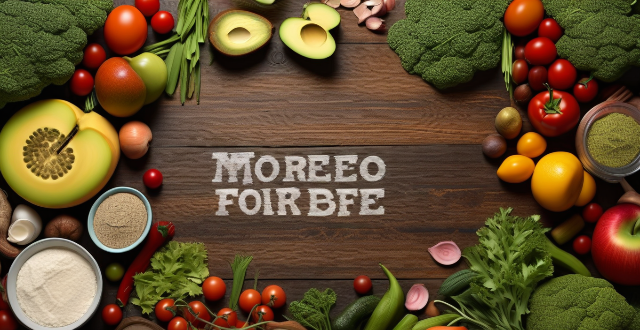Including more fiber in your daily diet is crucial for maintaining good health. Fiber helps regulate the digestive system, lower cholesterol levels, control blood sugar, and aid in weight management. To incorporate more fiber into your daily diet, start your day with a high-fiber breakfast, snack smart with fiber-rich foods, include whole grains in your meals, add legumes to your dishes, don't forget about vegetables, and choose high-fiber snacks and desserts. It's important to increase your fiber intake gradually to prevent any digestive discomfort and drink plenty of water throughout the day. By making these simple changes to your diet, you can easily incorporate more fiber into your daily routine and enjoy the benefits it brings to your health.

Incorporating More Fiber into Your Daily Diet
Including more fiber in your daily diet is essential for maintaining good health. Fiber helps to regulate the digestive system, lower cholesterol levels, control blood sugar, and aid in weight management. Here are some tips on how you can incorporate more fiber into your daily diet:
1. Start Your Day with a High-Fiber Breakfast
- Whole Grain Cereals: Choose whole-grain cereals that have at least 5 grams of fiber per serving. Look for brands that contain bran or oats.
- Fruits and Nuts: Add fresh fruits like apples, bananas, or berries to your cereal. Sprinkle some nuts and seeds, such as almonds or chia seeds, for an extra fiber boost.
2. Snack Smart with Fiber-Rich Foods
- Vegetables: Munch on raw veggies like carrots, celery, or bell peppers with a high-fiber dip like hummus or Greek yogurt.
- Fruits: Eat an apple, pear, or orange instead of processed snacks. These fruits are not only high in fiber but also packed with vitamins and minerals.
3. Include Whole Grains in Your Meals
- Whole Grain Bread and Pasta: Replace refined bread and pasta with whole grain versions. Look for bread labeled "100% whole wheat" and choose pasta made from whole grains or legumes.
- Brown Rice and Quinoa: Swap white rice for brown rice or try cooking with quinoa, which is also a complete protein source.
4. Add Legumes to Your Dishes
- Lentils and Beans: Incorporate lentils, chickpeas, black beans, or kidney beans into soups, stews, salads, and side dishes. They are not only rich in fiber but also provide plant-based protein.
- Peas and Edamame: Add peas to your meals or snack on edamame, which is a great source of both fiber and protein.
5. Don't Forget About Vegetables
- Leafy Greens: Fill half your plate with leafy greens like spinach, kale, or collard greens. They are low in calories but high in fiber and nutrients.
- Cruciferous Vegetables: Include broccoli, cauliflower, Brussels sprouts, and cabbage in your meals. These vegetables are not only fiber-rich but also contain compounds that support overall health.
6. Choose High-Fiber Snacks and Desserts
- Popcorn: Air-popped popcorn is a whole grain and a good source of fiber. Make sure to avoid adding too much salt or butter.
- Berries: Enjoy a bowl of fresh berries as a dessert or snack. Berries are not only delicious but also packed with fiber and antioxidants.
Remember, it's important to increase your fiber intake gradually to allow your body to adjust and prevent any digestive discomfort. Drink plenty of water throughout the day to help move the fiber through your digestive system effectively. By making these simple changes to your diet, you can easily incorporate more fiber into your daily routine and enjoy the benefits it brings to your health.